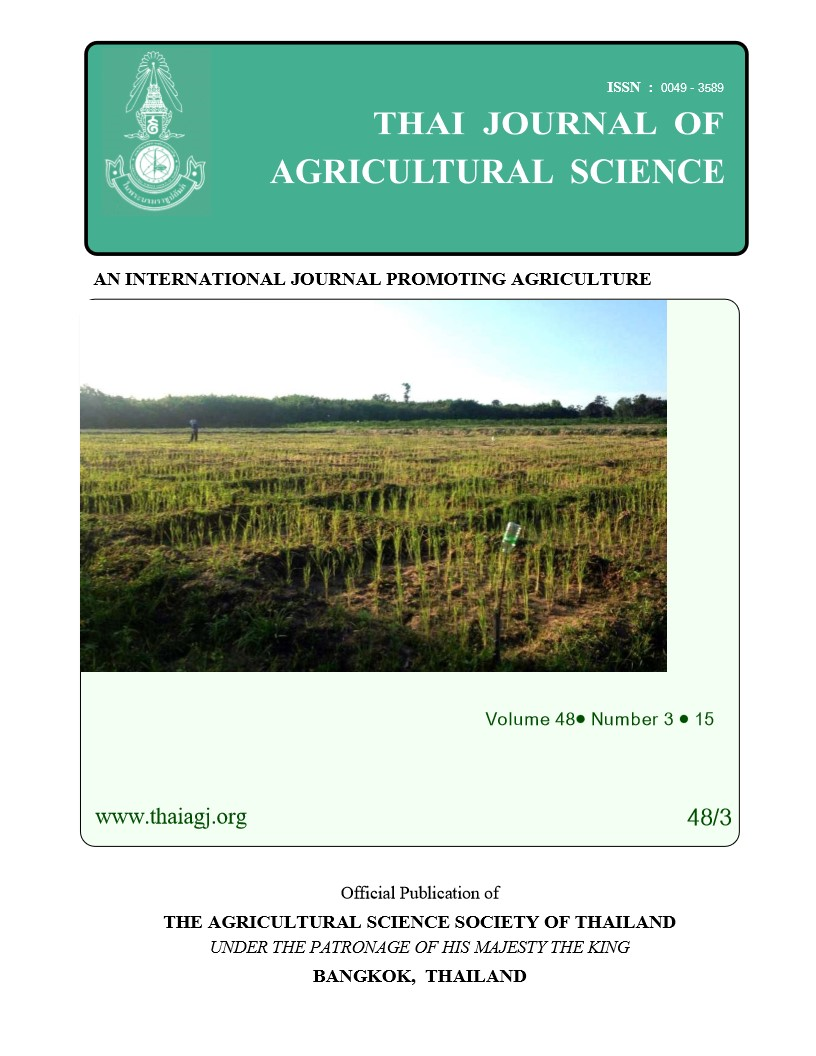Effect of Pseudomonas fluorescens Inoculation on Yield and Yield Components of Rice (Oryza sativa L.) under Different Levels of Phosphorus Fertilizer
Main Article Content
Abstract
To evaluate the effect of phosphorus (P) fertilizer rate and Pseudomonas fluorescens inoculation on rice growth and grain yield, a factorial experiment was performed based on randomized complete blocks design with three replicates at Rice Research Station of Tonekabon, Iran, during 2013-2014 growing season. Studied factors include phosphorus fertilizer rates (0 (control), 25, 50, 75 and 100 kg ha-1 as triple superphosphate) and Pseudomonas fluorescens application (control (without inoculation) and seedling root tip inoculation). The studied traits were plant height, panicle number per m2, filled grain number per panicle, 1000-grain weight, percentage of fertile panicle, grain yield, biological yield, and harvest index. Analysis of variance showed that the effect of phosphorus fertilizer rate was significant for panicle number per m2, filled grain number per panicle, grain yield, and biological yield, while the effect of P. fluorescens inoculation was significant for filled grain number per panicle, biological and grain yield. Rice grain yield was significantly increased from 5873 to 7703 kg ha-1 as P application rate increased from 0 to 75 kg ha-1 and thereafter was slightly increased. Furthermore, grain yield was significantly higher for plants inoculated with P. fluorescens compared to un-inoculated plants. From the results of this experiment, application of phosphorus at the rate of 75 kg ha-1 and seed inoculation with P. fluorescens are recommended to obtain the highest grain yield in rice.


